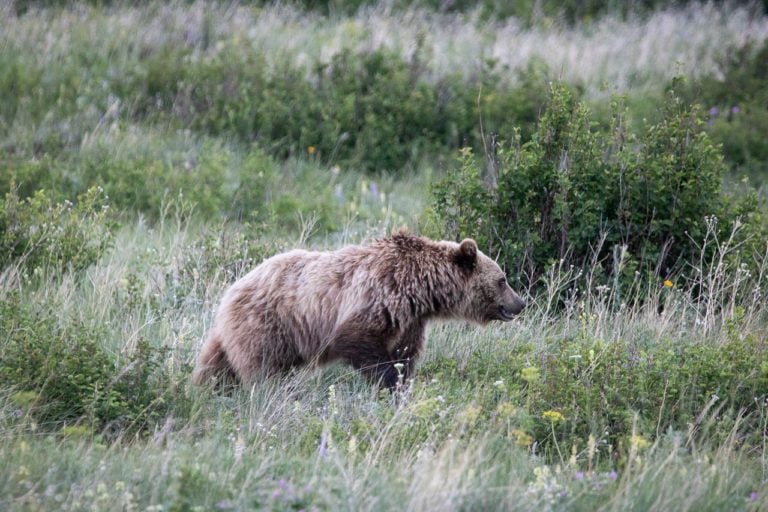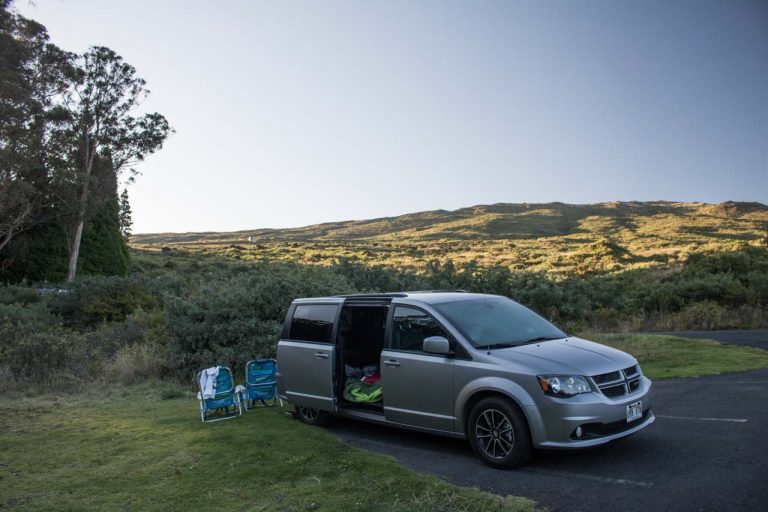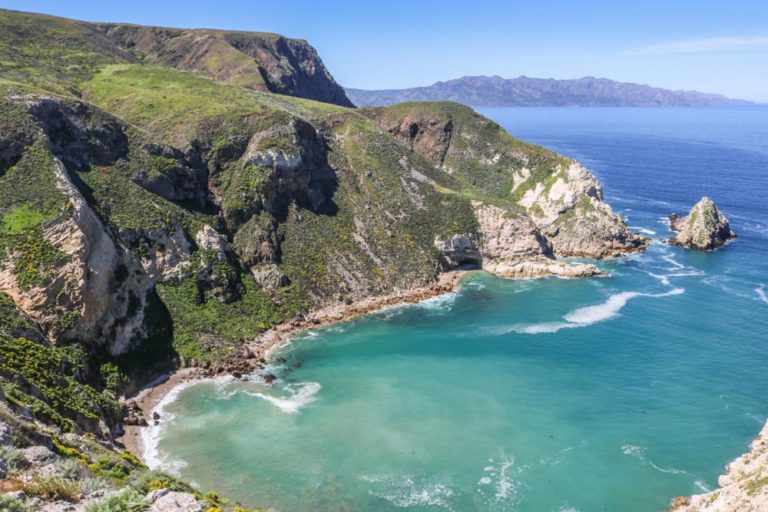How to Prevent Bison Attacks: Bison Safety While Hiking
Although grizzly bears, black bears and mountain lions might invoke the most terror in hikers, they’re not nearly as dangerous as bison are. In fact, in Yellowstone National Park, more people get injured by bison than any other animal, including the often-feared grizzlies.
These huge herbivores might seem gentle, calm and indifferent, but they’re notoriously unpredictable and protective.
A Brief History of Bison in the USA
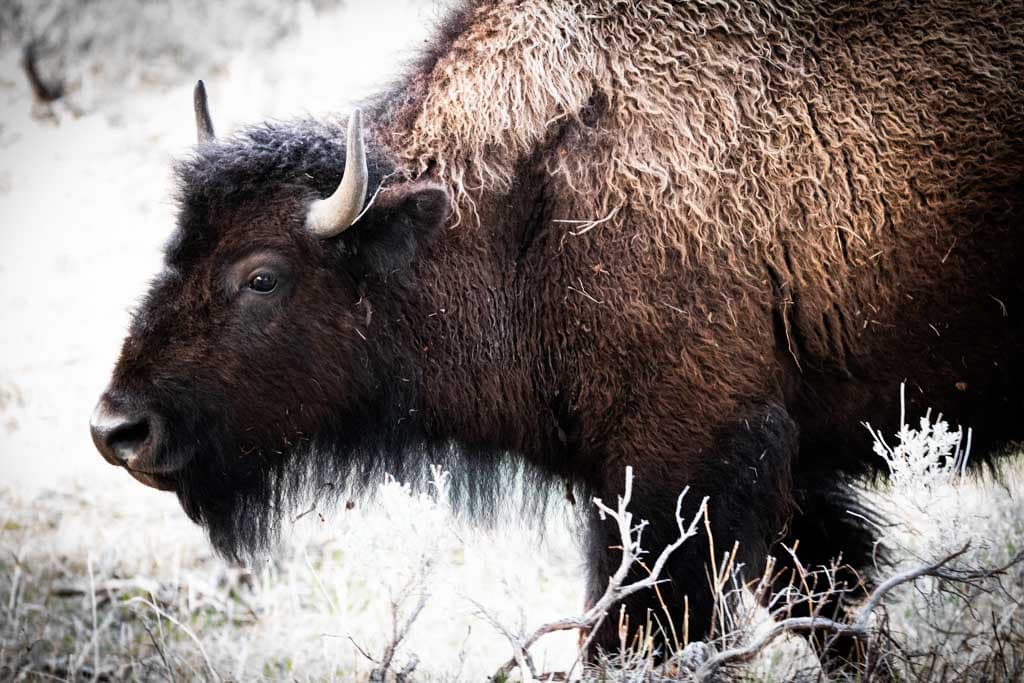
This blog post about bison safety contains affiliate links. You can read more about our Terms of Use / Disclosure here.
American bison, often also (wrongly) called buffalo, used to roam the Great Plains in truly massive numbers—estimates go as high as 30 to 60 million before the arrival of European settlers.
By the end of the 19th century, after just a few decades of mass slaughter, fewer than 400 individual wild bison remained.
Now, after dedicated conservation efforts, including in national parks like Yellowstone, Grand Teton, Badlands, Wind Cave and Theodore Roosevelt, there are once again thousands of wild bison in America.
That being said, however, the American bison is officially “ecologically extinct” since they only live in managed areas—metapopulations separated from one another.
Nowadays, about 20,000 plains bison are managed as wildlife, while only 5,000 of those are actually disease-free and unfenced. Most of them live in Yellowstone National Park, which is the only place in the U.S. where bison have lived continuously since prehistoric times.
Bison Safety While Hiking: Precautions & What to Do During Encounters
Seeing bison in their natural habitat is one of greatest nature experiences in America. However, some people tend to forget that these are wild animals.
Since places like Yellowstone, with its volcanic features, waterfalls and abundant bird life, attract huge numbers of tourists, human and bison encounters happen rather frequently.
Even though the National Park Service does everything it can to educate visitors, some of them simply do not adhere to the safety regulations. Occasional bison attacks are a result of that.
The modern “selfie culture” doesn’t help either. People regularly get way to close to wild animals just to get a photo with them—just “for the ‘gram”.
This brings us to the most important bison safety tip to prevent a bison attack.
How to Prevent a Bison Attack
Avoiding getting charged by a bison is actually not difficult at all. Simply stay from enough away from the animals and they’ll have no reason to attack you.
The National Park Service recommends staying at least 25 yards away from bison. Additional things you can do to avoid bison attacks are the following.
- Always be aware of your surroundings, look around and don’t hike with earphones.
- Walk slowly around blind corners. Make noise to make them aware of your presence.
- Never hike across a meadow if you see there are bison present.
- If dogs are allowed in the park, always keep them on a leash and under your control.
- Again, stay at least 25 yards away from bison. (Some parks, particularly in Canada, recommend a distance of 100 yards or more.)
- Never hike between bison, especially between a cow and her calf.
- Never approach a bison and never touch one.
- Do not feed any wild animals, including bison, to prevent them from getting accustomed to being fed by humans. This greatly increases future bison attacks or other undesirable encounters.
- Be extra cautious in May and June when cows are super-protective of their young calves. July and August, on the other hand, is the bison mating season and when testosterone-charged bulls can be much more aggressive.
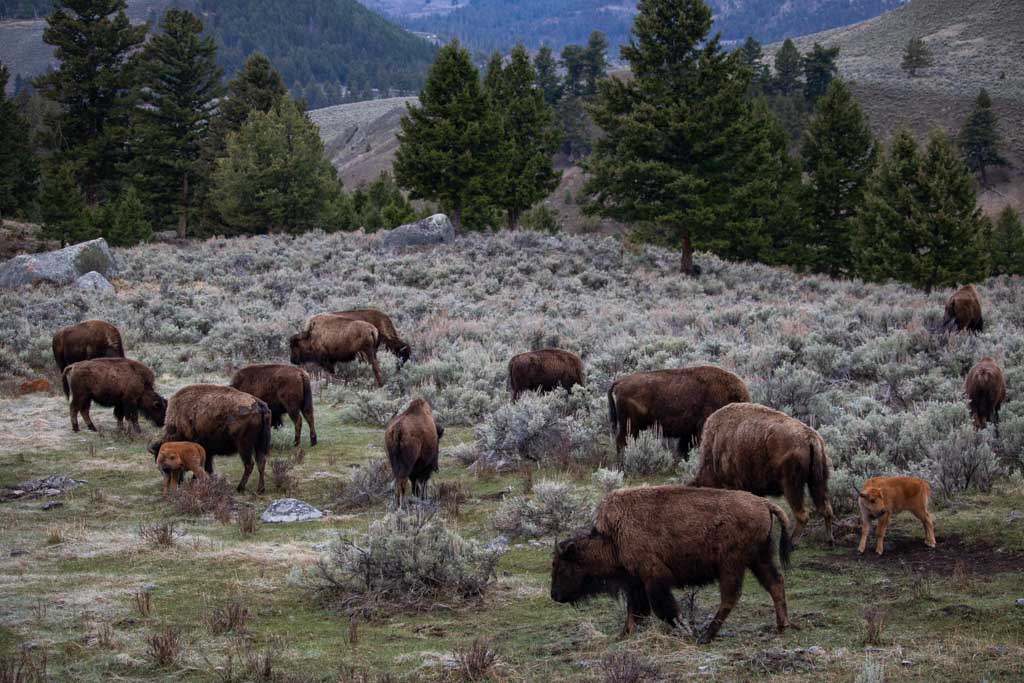
What to Do If You Encounter a Bison While Hiking
Sometimes, you may be extremely careful, meticulously follow all regulations and bison safety tips, yet still come across a bison.
In that case, it’s critical that you know what to do when encountering bison. Adhere to the following tips and you’ll greatly reduce the chance of a bison charging you.
- If the bison stops what it’s doing and looks up at you, that’s a clear sign you’re too close. Back away slowly. Don’t run and make any sudden movements.
- If the bison is walking down the trail toward you, either retreat where you came from or leave the trail, giving it a wide berth.
- Surprised bison often run away, but may stop and take a closer look at you. Assess the situation and distance. Either back away slowly allowing them to move, or walk around them and keep your distance at all times.
- Again, never approach a bison.
- If the bison doesn’t move, it’s you who should back away.
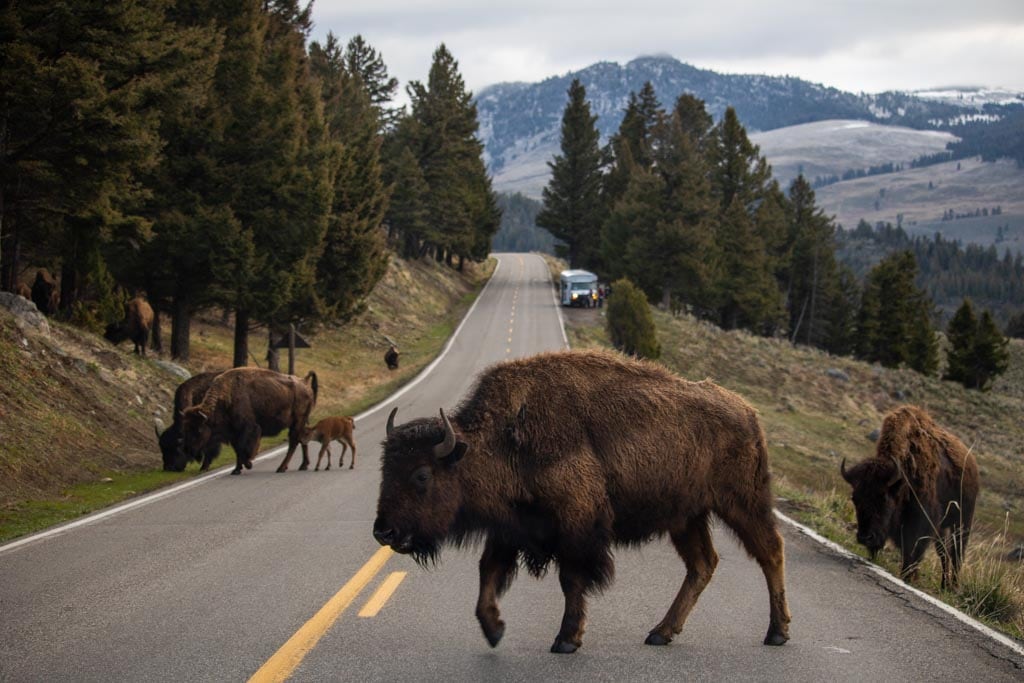
What to Do If a Bison Charges You
In the unfortunate event a bison does charge, there is not a lot you can do to stop it. It’s really all about knowing how to prevent a bison attack and what to do if you encounter a bison.
There are some clear signs that a bison is agitated and might attack, though. Watch for them and retreat as quickly as possible when you notice agitation. An angry bison is not something you want to mess with.
Bison warning signs include:
- Snorting
- Shaking or tossing of its head
- Pawing the ground
- Raising its tail
- Bluff charges
All these things can indicate an upcoming bison charge. If you encounter a bison and it behaves like this, back away immediately. Leave the area as soon as possible.
In case of a bison charging, you’re out of luck if you’re in an open area. Bison can run up to 35 mph (three times as fast as the average human). Don’t think you can outrun a bison. You cannot.
Unlike other wild animals like black bears, grizzly bears and especially mountain lions, making yourself large and making noise will not scare off a bison. This will not deter an angry bison.
Your best chance of escaping an attacking bison unharmed is finding cover right away. If there are trees around, take cover behind one and keep moving as the animal tries to get to you. Any large object will do, though, including cars and restroom buildings.
Climbing a tree is also a good idea, if you can. Bison obviously can’t climb. Since these are not animals that are trying to eat you, a charging bison will usually leave the scene if you’re up in a tree.
In short, the best bison safety tip to avoid bison attacks is simply keeping your distance. If you happen to somehow get too close to a bison, retreat as quickly as possible without running. Never approach a bison.
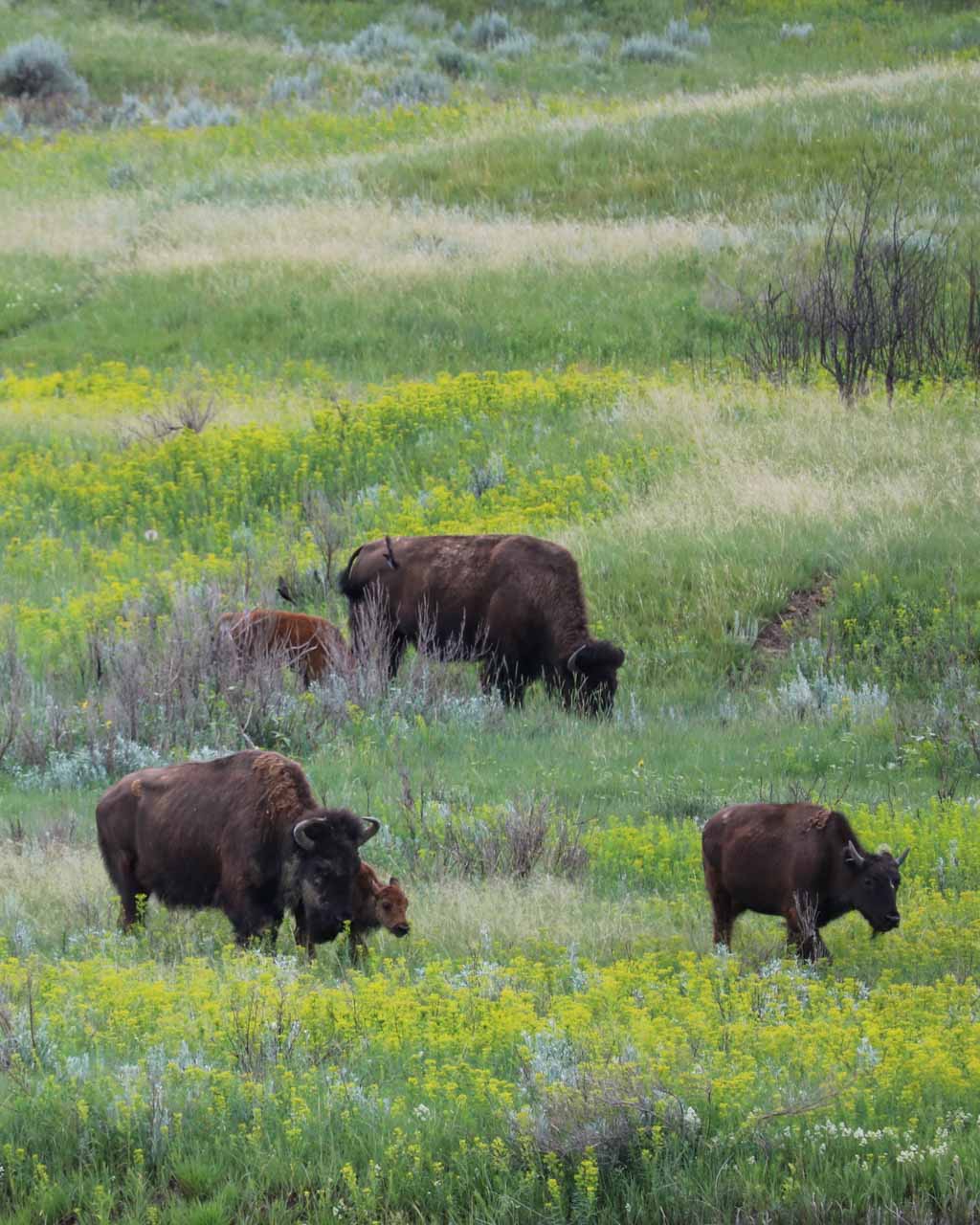
Where to See Bison in the U.S.
While they once roamed the entire center of the North American continent, wild bison are now limited to just a handful of separate locations. The following are the absolute best places to see bison in America.
- Yellowstone National Park, Wyoming, Montana and Idaho
- Grand Teton National Park, Wyoming
- National Bison Range Wildlife Refuge, Montana
- Badlands National Park, South Dakota
- Wind Cave National Park, South Dakota
- Custer State Park, South Dakota
- Theodore Roosevelt National Park, North Dakota
- Rocky Mountain Arsenal National Wildlife Refuge, Colorado
Bison Encounters Safety FAQs
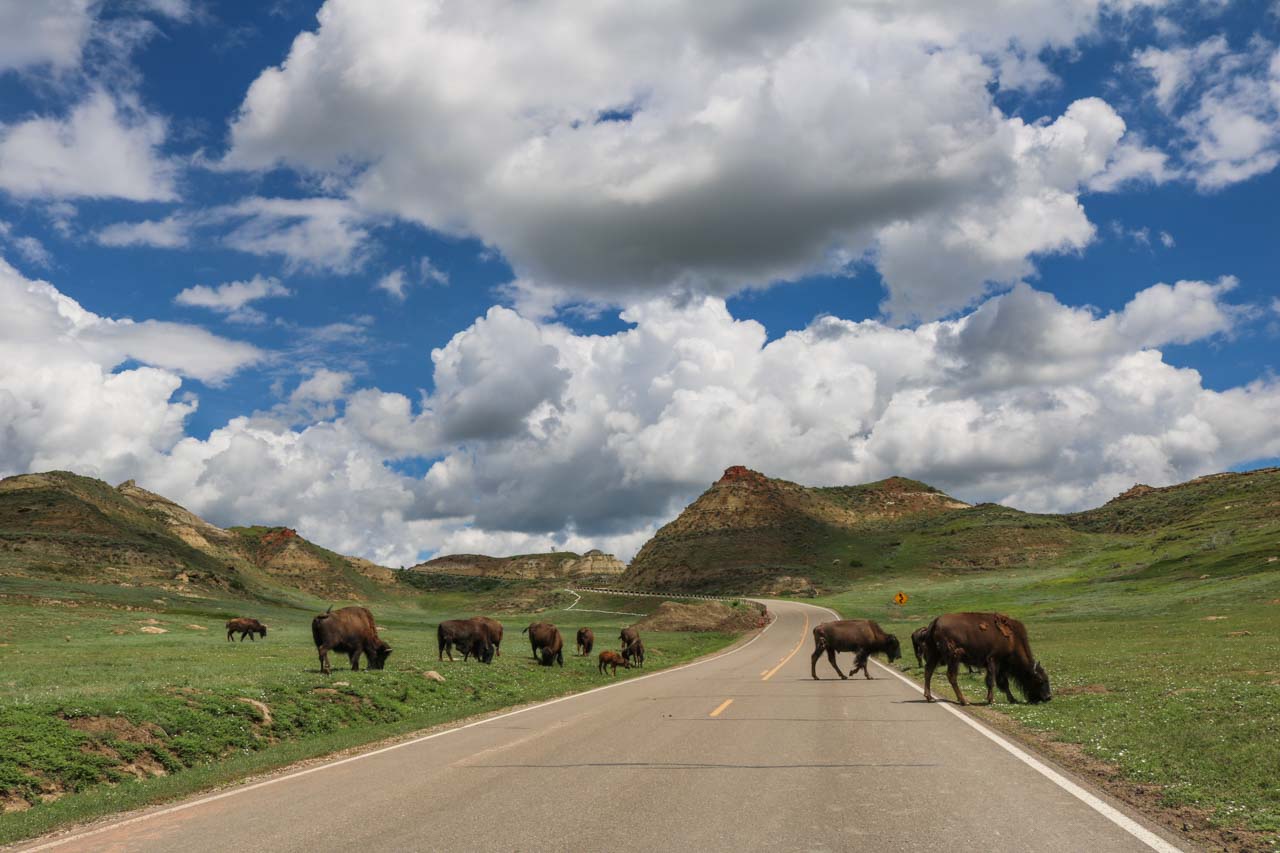
Are Bison Dangerous?
Yes. After reading the text above, it should be pretty clear that bison are wild animals and can be very dangerous. As mentioned, in Yellowstone National Park, one of the best national parks for wildlife viewing, bison have hurt way more people than any other animal.
I recommend always bringing a basic first-aid kit whenever you go hiking and camping, especially if there are potentially dangerous animals around.
How Fast Can Bison Run?
Despite their large size and heavy appearance, bison are actually extremely agile and fast. They can, for example, spin around faster than a horse and jump over high fences. Bison can run up to 35 miles per hour.
When Is the Bison Mating Season?
The bison rut begins in July and lasts through August. In this period, bulls are fired up on testosterone and will fight other bulls for dominance over females.
It’s especially important to keep your distance from individual bison and bison herds this time of year.
How Far Should You Stay Away From Bison?
The National Park Service recommends staying at least 25 yards away from bison. It’s smart to stay a lot further from these animals, though. A good rule of thumb is to consider the distance you think is safe enough and then double it.
Don’t be stupid and think you’re special. Bison don’t care about how awesome or brave you are. They will charge if you get too close. The number one bison safety rule is keeping your distance.
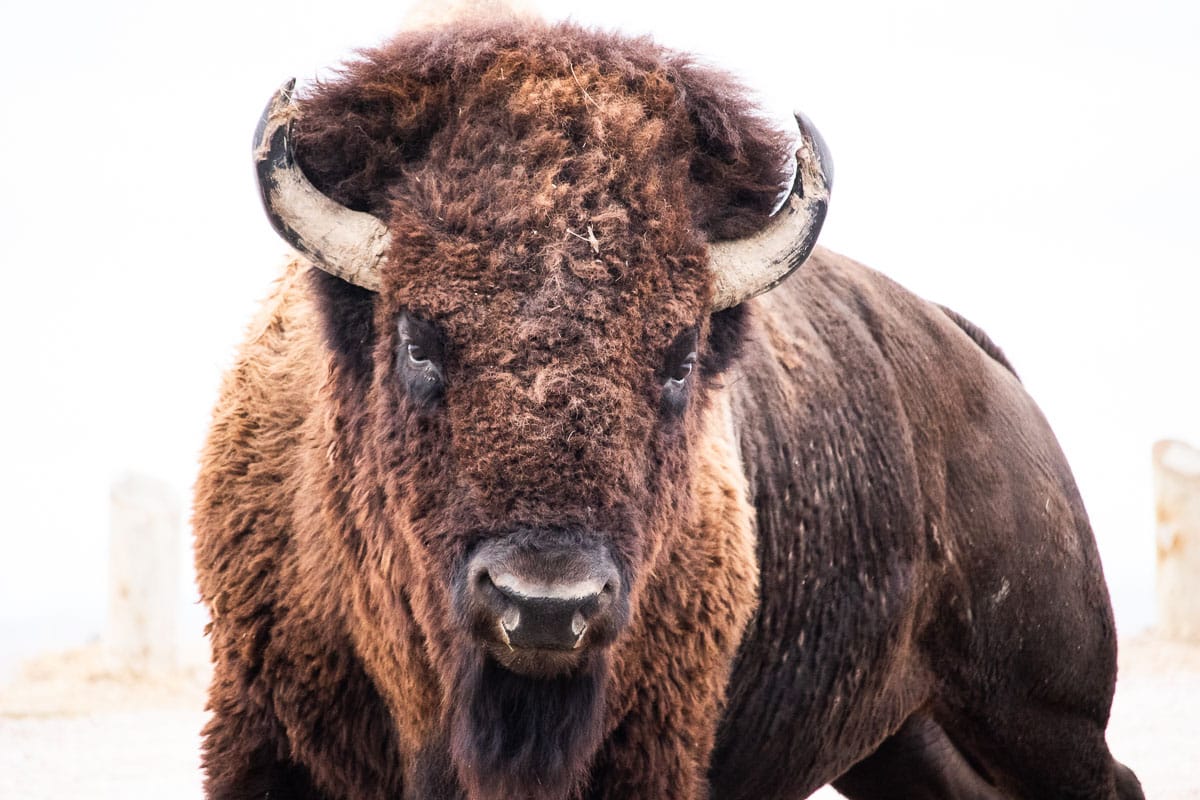
How Large Do Bison Get?
American bison are North America’s largest land mammal. Adult cows weigh about 1,000 pounds and reach a height of 4-5 feet, while full-grown bulls can weigh twice as much, up to 2,000 pounds, and get 6 feet tall.
Does Bear Spray Work on Bison?
There are accounts of people who have successfully used bear spray during a bison charge. So, it’s a good idea to have it on you and easily accessible when hiking in bison country (which, after all, is often also bear country). It may be the only defense you have. It’s literally better than nothing.
Sometimes, it’s said that bear spray works on any animal that has a nose. Carry bear spray at all times, but don’t rely on it. It’s always better to avoid a bison confrontation altogether by keeping your distance and not doing anything foolish.

